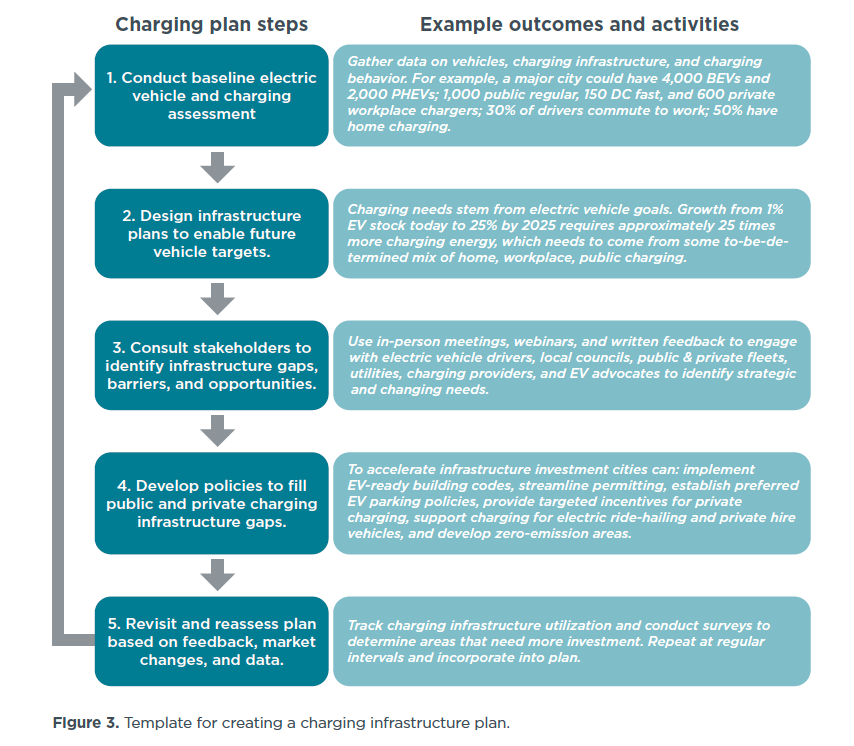
Electric vehicle charging guide for cities
Global electric vehicle uptake has grown an average of over 60% per year from 2013 to 2018, to about 5 million light-duty electric vehicles on roads around the world.
Global electric vehicle uptake has grown an average of over 60% per year from 2013 to 2018, to about 5 million light-duty electric vehicles on roads around the world. Public charging infrastructure has also grown an average of over 60% annually over the same period, reaching 600,000 charge points at the end of 2018. However, there remains considerable uncertainty around the ideal amount and type of charging infrastructure needed, and how to finance and manage the charging network.
This report summarizes research and trends in the top electric vehicle markets around the world. The research identifies the following insights:
Much more charging of all kinds is needed to enable a full transition to electric vehicles. To meet ambitious electric vehicle goals and ensure flexibility for all drivers, cities will need many more charging points in public, at homes, and at workplaces—up to a 20% growth in charge points each year. Ideally, charging infrastructure would grow approximately proportional to the electric vehicle stock, but additional public charging, including DC fast charging, can also fill in gaps when private home and workplace charging is infeasible in particular settings.
Each city can plan for its unique charging needs. The mix of a city’s charging needs, such as public and private points, or regular and fast charging options, should be assessed based on each city’s local factors, including housing stock, commuting patterns, vehicle mix, electric vehicle growth expectations, and the electrical grid.
Many policies can accelerate the pace of charging deployment. Cities have a number of tools they can implement to accelerate the construction of infrastructure by a range of different charging providers. This includes electric vehicle-ready building codes to reduce future costs; streamlined permitting processes and pre-approval of sites to draw private investment; targeted, easy-to-access incentives to fill difficult-to-reach segments; policies to encourage the electrification of ride-hailing and private-hire vehicles to encourage high-utilization business cases; and working closely with electric utilities and grid operators to reduce stress on the grid.
The report also identifies opportunities for city governments to support the continued growth of their charging infrastructure and the electric vehicle market. Based on the experiences of leading cities, it identifies a pathway to constructing a successful charging infrastructure strategy, as shown in the Figure below:


